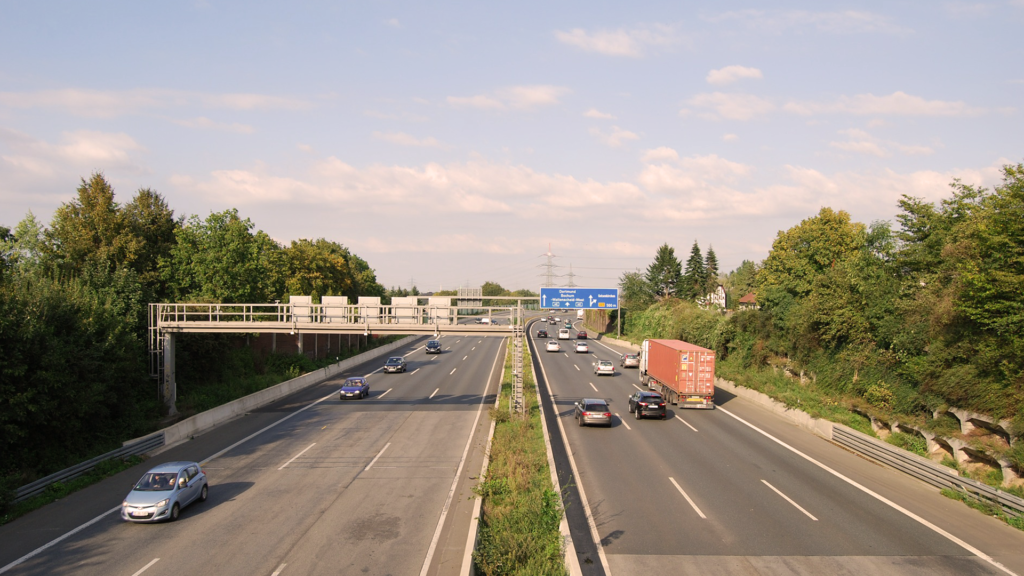As temperatures hit record highs throughout the UK, many people are concerned about the dangers of working and driving in extreme heat.
What are the risks of driving in a heatwave?
Breakdowns
The UK sees a spike in breakdowns over the summer months. this is due to a number of factors that can adversely affect vehicles during the summer months:
- Fluid levels – In extremely hot temperatures, car fluids (like any other liquids) evaporate and run out much faster than they do in stable weather
- Tyre pressure – Hot weather also affects the air inside your tyres, with high temperatures increasing tyre air pressure, leading to the potential for exploding tyres during the heatwave
- Batteries – Vehicle batteries are also under increased pressure during the summer months, with high temperatures having the potential to cause damage to batteries and connectors
Visibility
In the UK we associate weather-related visibility issues with the winter months – rain, sleet & fog can all cause poor visibility on the roads. But heatwaves can bring their own problems:
- Dry, dirty windscreens (thanks to those fast-disappearing fluids)
- Hot-weather mirage & wavy lines
- Melted road surfaces
- Glare & dazzle from sunlight
- and even windscreen wipers that have melted in the heat.
Health risks
Drivers in hot vehicles are at increased risk of the dangers of sunstroke, heat exhaustion & dehydration, leading to symptoms like dizziness and loss of concentration that are dangerous for driving.
Accidents
The increased likelihood of a breakdown, coupled with the potential for reduced visibility, dizziness caused by sunstroke as well as frayed tempers in the heat can all lead to an increased risk of accidents in hot weather.
Stranding
All those accidents and breakdowns, as well as holidaymakers taking long journeys, make heavy traffic on motorways and other main roads more likely. Drivers may find themselves trapped in their vehicle in standstill traffic under blazing sunlight, which can be dangerous in itself in extreme temperatures.
How can transport managers keep drivers safe in a heatwave?
Drivers are the backbone of the logistics sector, and keeping them safe & content is paramount. Make sure drivers understand that they can take the breaks they need, and they know what additional checks and safety equipment might be required in extreme weather.
Driver daily walkaround checks
While thoroughly checking the vehicle should be part of the drivers’ daily walkaround check, there are some checks that become more important than ever in the summer months, so make sure drivers are checking daily (or even throughout the day in extreme heatwaves).
Fluid levels
Drivers should check & refill screenwash, coolant, motor oil, transmission fluid, brake fluid and power steering fluid regularly, but especially during hot weather.
Tyre pressure
Be careful when checking tyre pressure, that tyres are completely cool before gauging or adjusting the pressure.
Batteries
Vehicle batteries should, of course, be inspected & replaced regularly as part of your vehicle maintenance programme, but it may be a good idea for drivers to check the battery connections as part of their daily walkaround checks during very hot weather.
Jump cables
Equally, it is essential drivers check they have jump leads on board so vehicles can be restarted in the case of battery issues.
Wiper blades
Windscreen wipers will likely be part of the daily walkaround check, but again, it may be wise for drivers to check them throughout the day too when the weather is very hot.
Air conditioning
Through most of the year, in-cab air-con is just a ‘nice-to-have’ but in extreme temperatures, it can be essential for keeping drivers cool and alert. Make sure drivers check the AC or fans are working as part of their daily inspections.
Other considerations for driving in a heatwave
Equally, there are other aspects of driving in a heatwave that aren’t part of the daily walkaround check – but should be taken into consideration nonetheless:
PPE
Ensure drivers have hot-weather PPE & other essentials – sunglasses to protect from glare, reflective window shades that can be used during breaks, SPF sunscreen to help protect that ‘truckers tan’ and plenty of drinking water to stay hydrated.
Shade
Advise drivers to park in the shade where possible to protect the battery & engine, as well as to keep the cab somewhat cool. Providing reflective window shades can also assist with keeping the cab cool during breaks.
Breaks
Commercial drivers must adhere to working time directives at all times of the year, but in hot weather, drivers may need to take more frequent breaks to stay safe. Reassure drivers that they can take the breaks they need to rest their eyes, hydrate and get out of direct sunlight. Ultimately, driver safety and avoiding road traffic accidents is more important than arriving at an exact time.
If you use a customer-first TMS (transport management system) like Stream Go, customers will be kept up-to-date with their ETA. Any minor delays resulting from additional breaks (or major delays caused by breakdowns & road traffic accidents) will be immediately and proactively communicated with the customer.
Adding heatwave checks to your daily walkaround inspections
Using a Walkaround Check feature lets you easily add and remove checks as the environment or situation changes.
That means that you can add checks for things like battery connections or drinking water in the cab when hot weather warnings are broadcast.
Even when you remove those checks from the drivers’ daily checklist, you still have a historic record of them available for the dates they were required.
Seasonal Checks
You could also set up reminders in the system to add seasonal checks – for example, an ‘annual booking’ every October to put your winter checks in place. When you are notified of the booking, you can add seasonal checks to the daily checklist – like ensuring there is a scraper & de-icer in the cab, checking the heater’s function, checking the driver has a high-vis jacket or a torch in the cab, for dark mornings and evenings. This booking could even act as a reminder to change to winter tyers or carry out other seasonal maintenance work on your vehicles.
Driving in a heatwave
Commercial drivers are essential for any logistics operation. As temperatures rise, driving can become uncomfortable and even dangerous, if steps aren’t taken to keep road users safe. Ensure that drivers:
- Routinely check their vehicle for temperature-specific issues
- Stay well-rested, cool and hydrated throughout the day
- Have everything they need to stay safe & cool if they become stranded
Discover on a demo how Stream handles seasonal maintenance & inspections to help you keep your drivers safe & cool in the heatwave.








